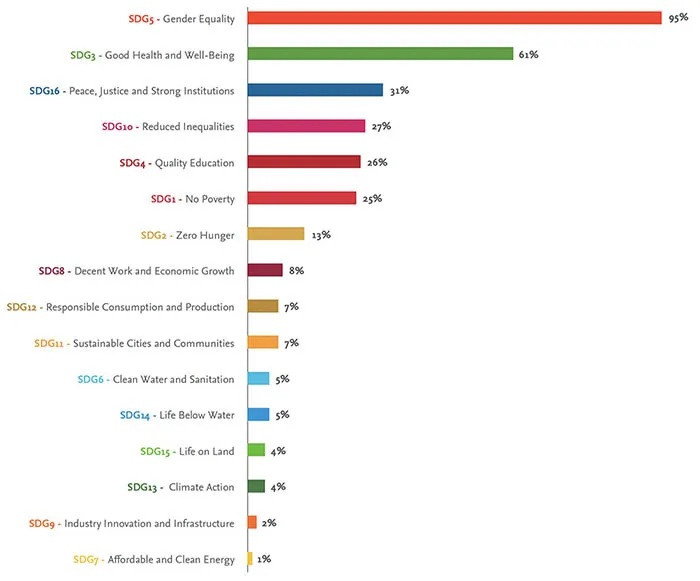Making progress towards a more inclusive research ecosystem
2022년 3월 21일
저자: Domiziana Francescon

Elsevier's Global Research Cultures Advisory Board report focuses on four areas for progress
Inequities in academic research manifest in many different ways, from the low proportion of women who are tenured professors, to the low rates of grants awarded to women and researchers who are members of underrepresented racial & ethnic groups in research, to the lack of appropriate sex and gender-based analysis in research studies.
As a global leader in research information & analytics and scientific publishing, Elsevier can make an impact in key areas to enhance diversity and inclusion in research across gender, race & ethnicity, sexual orientation, physical ability, and geographical dimensions.
In March 2020, Elsevier established the Global Research Cultures Advisory Board, with a global a group of leading academic researchers and scientists, each of whom have been proponents of social equity, inclusion and diversity throughout their distinguished careers.
The mission of the Board is to create a more equitable research ecosystem by:
Influencing and improving gender, racial and ethnic diversity and inclusion, and geographic representation in academic research, e.g., across Editorial Boards and peer review
Helping set standards and best practices for incorporating I&D principles in scientific research
Driving I&D initiatives that impact career progression in academia of underrepresented groups
Key initiatives and progress areas
Improving the diversity of Editorial Boards and developing a Gender Diversity Indicator for journals
During 2021, Elsevier has increased the representation of women on Editorial Boards of proprietary journals from 16% to 24%. Women’s participation in International Advisory Boards of The Lancet group’s 23 journals rose from 30% in early 2019 to 53% at the end of 2021, and to 39% for the Cell Press journals.
With the aim to create transparency on current gender diversity at an individual journal Board level, we have set out to develop a gender diversity indicator, which would be shared on the journal home page. In February 2021, approximately 550 Elsevier journals displayed the Editor Gender Diversity Indicator and visualization pod on their homepages. By the end of 2021, 772 journals were displaying the Indicator (43% of proprietary journals).

Comparison of gender diversity distribution
Implementing gender and race and ethnicity self-reporting for researchers using Elsevier’s submission system
Data collection is key for measuring our progress in moving to more equitable participation in research. The goal of this initiative is to determine how to capture gender and race and ethnicity self-reported information on Elsevier’s submission systems, the team:
Has updated the gender identity schema, which has been rolled out for users of Aries Systems Editorial Manager® (Advisory Board members, reviewers and authors) at Cell Press and The Lancet journals
A full implementation plan for the remaining titles will be developed in early 2022
Will work with the Joint commitment for action on inclusion and diversity in publishing group to refine and finalize a new Race and Ethnicity schema in 2022
Analyzing how the COVID-19 lockdown has impacted women as authors and peer reviewers
Elsevier collaborated on a research study with academic researchers of PEERE, analyzing Elsevier journal submission and peer review data through a gender lens to understand whether the pandemic has impacted these areas. The results showed that women in the age group of 40-50 across all disciplines and in every corner of the globe have been penalized more than other age cohorts during lockdowns during the first wave of the pandemic.
Integrating the sex and gender dimension to advance SDG research
Elsevier’s International Center for the Study of Research (ICSR) worked closely with Dr Elizabeth Pollitzer, founder and director of Portia and a member of the Elsevier I&D Board, on a study to provide a benchmark proof-of-concept for the development of inclusion of sex and gender considerations as a critical dimension of sustainability research.
The study demonstrates that there is variability on how sex and gender factors into research output connected to the UN’s Sustainable Development Goals (SDGs). SDG5 (Gender Equality) and SDG3 (Good Health and Well-being) are the only SDGs with more than 60% of the publications factoring in sex and/or gender. The remaining 14 SDGs have less than 40% of publications that include sex and/or gender research, and therefore such research is at risk of producing outcomes that are not inclusive.

Gender Indicator and Board global representation on homepage for Elsevier's journal Brain Research
Accelerating existing institutional level initiatives supporting career progression and improving inclusive academic environment via partnerships
Starting with the very first Gender Summit in 2011, Elsevier has supported the Gender Summits through a range of financial and in-kind support, providing expertise in Editorial Board diversity, gender balance at conferences, sex-disaggregated methodologies and developing new editorial guidelines and training on sex and gender in research.
In November 2021, Elsevier made an additional $200,000 contribution to the Elsevier Foundation to establish a new early career researcher program focusing on career progression for women researchers and underrepresented scientists from different racial and ethnic backgrounds. Input, advice and expertise from Elsevier GRC Advisory Board members including Nieng Yan and Miyoko Watanabe were critical in shaping the new partnerships.

Percentage of publications that include gender and/or sex research (Source: Rachel Herbert, Holly J. Falk-Krzesinski and Andrew Plume: "Sustainability Through a Gender Lens," Sept 2020, SSRN)

The organizing committee of the Gender Summit 17 (Europe) celebrating the success of the conference, Amsterdam, October 2019.
Last year, the Elsevier Foundation published a visual retrospective to celebrate 10 years of the Gender Summit and its collaboration with Portia.
